
Mielecki (plural: Mieleccy, feminine form: Mielecka) was a family of knights, a branch of the Gryffin Clan. The founders and former owners of the City of Mielec. [1]

Mielecki (plural: Mieleccy, feminine form: Mielecka) was a family of knights, a branch of the Gryffin Clan. The founders and former owners of the City of Mielec. [1]
It is believed that their progenitor could be Pawlik z Mielec, mentioned in 1224. The first documented ancestor was Jakub Trestka, castellan of Brzesc in 1334. The Mielecki of Gryf family line died out in 1771.
The family used the Gryf coat of arms.
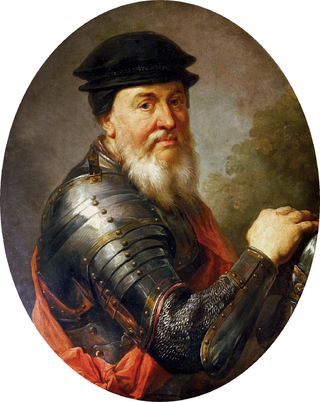
Jan Amor Tarnowski was a Polish nobleman, knight, military commander, military theoretician, and statesman of the Crown of the Kingdom of Poland. He was Grand Crown Hetman from 1527, and was the founder of the city of Tarnopol, where he built the Ternopil Castle and the Ternopil Pond. The first Count of the Holy Roman Empire in the Tarnowski family (1547).

Chodkiewicz is a Polish coat of arms. It was used by the Chodkiewicz family in the times of the Polish–Lithuanian Commonwealth. A variant of the Kościesza with the Gryf coat of arms and the notable longer family line as well as much bigger family than shown here.

Jerzy Radziwiłł, nicknamed "Herkules", was a Polish–Lithuanian nobleman.
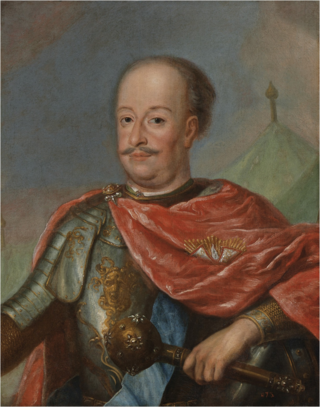
Adam Mikołaj Sieniawski (1666–1726) was a Polish nobleman, aristocrat and military leader.

Prince Hieronim Augustyn Lubomirski (1648–1706) was a Polish noble (szlachcic), magnate, politician and famed military commander. He was a Prince of the Holy Roman Empire SRI.

Wacław Piotr Rzewuski (1706–1779) was a Polish dramatist and poet as well as a military commander and a Grand Crown Hetman. As a notable nobleman and magnate, Rzewuski held a number of important posts in the administration of the Polish–Lithuanian Commonwealth.

Mikołaj Mielecki h. Gryf was a Polish nobleman and politician. Since 1569 Mielecki was the voivod of Podolian Voivodship, between 1578 and 1580 he also served in the Polish Army as the Grand Hetman of the Crown.
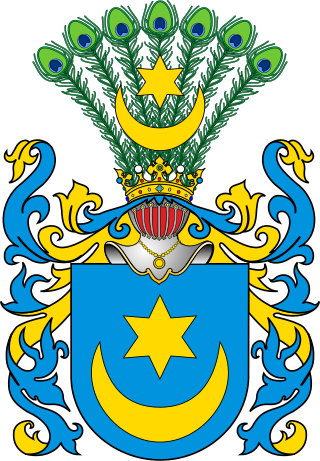
The House of Tarnowski is the name of a Polish noble and aristocratic family. Because Polish adjectives have different forms for the genders, Tarnowska is the form for a female family member.

Barbara Kolanka or Barbara Kołówna h. Junosza was a Polish noblewoman. She is best known as the mother of queen Barbara Radziwiłł and Mikołaj "the Red" Radziwiłł.

The House of Wiśniowiecki was a Polish-Lithuanian princely family of Ruthenian-Lithuanian origin, notable in the history of the Polish–Lithuanian Commonwealth. They were powerful magnates with estates predominantly in the Ruthenian lands of the Crown of the Kingdom of Poland, and they used the Polish coat of arms of Korybut.
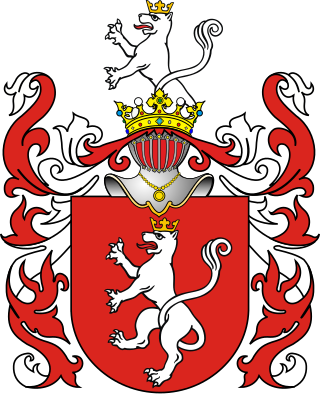
Firlej was a Polish szlachta (nobility) family. Magnates in the 15th and 17th century.

Jan Hieronimowicz Chodkiewicz was a 16th-century Lithuanian noble. He was Grand Pantler of Lithuania from 1559, Elder of Samogitia (1564–1579), Governor of Livonia (1566–1578), Grand Marshal of Lithuania (1566–1579), Count of Shklow 1568, Castellan of Vilnius (1574–1579). He was the elder of Telšiai and Plateliai from 1566, of Rumšiškės from 1568, and of Kaunas from 1569.

The House of Lanckoroński was an old Polish aristocratic family. Its representatives held power and influence in the Kingdom of Poland from the times of the late Piast dynasty to the end of the Polish–Lithuanian Commonwealth.

Zborowski of the Jastrzębiec coat of arms was a Polish noble family from Greater Poland, It played a significant role in Polish politics in the 16th century.

The House of Branicki was a Polish szlachta (nobility) family. Since Polish adjectives have different forms for the genders, Branicka is the form for a female family member.

The Sieniawski family was a Polish szlachta family. They were magnates in the First Republic of Poland. Their properties were inherited by the Czartoryski family after the family expired in the 18th century.
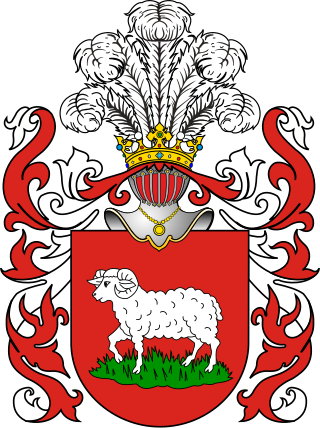
Koła was a Polish noble family, Magnates in the Polish–Lithuanian Commonwealth. The family declined at the beginning of the 17th century. The possessions of the family passed to the other magnates like the Mielecki, Sieniawski, Kmita and Odrowąż families.
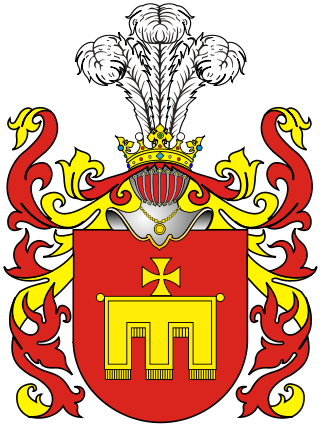
The Zebrzydowski was a Polish noble family.
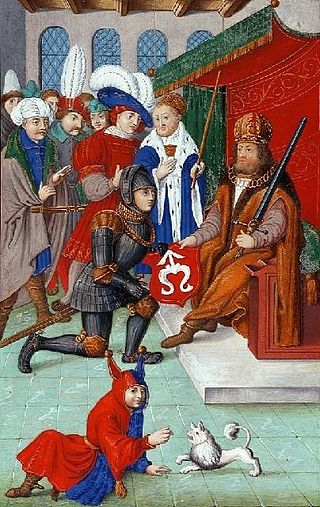
Odrowąż was an important family of knights in the medieval Kingdom of Poland, strongly allied with the Catholic church in the 12th century.